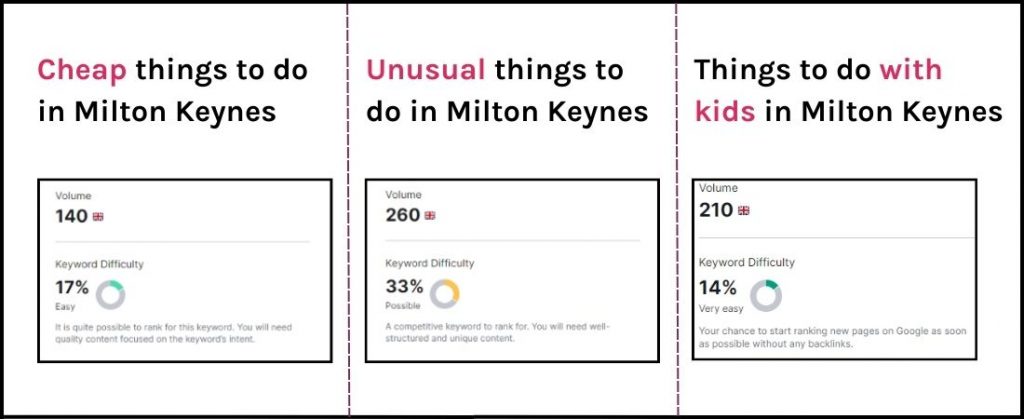Now that the dust has settled on the latest Helpful Content Update, albeit only into more dust kicked up by the October Core and Spam Updates, it’s probably a good time to think about what’s changed and what this means for our approach to search marketing.
What is the helpful content system?
In Google’s own words, the system aims “to better ensure people see original, helpful content created for people in search results”. In other words, it’s targeted at content which has been created primarily by people, for people. With that in mind, it’s slightly ironic that they use an AI model to determine whether a human will find it helpful or not, but it’s clear that this update has had major and lasting implications for Organic Search rankings.
Who were the winners and losers in the update?
Writing on Search Engine Land, Barry Schwartz suggested that the biggest losers were SEOs who had written content for the purpose of ranking in the SERPs which offers nothing unique or authoritative to the topic. And because this update appears to have predominantly removed unhelpful content, the “winners” are actually just the sites whose content hasn’t fallen foul of the system.
What does this have to do with keyword research?
Well, generally speaking, most SEOs begin their keyword research either with their own site (Search Console data or their existing rankings) or their competitors’ ranking content to determine where they need to add more content. The inevitable output from this type of research is to create more content in this area, essentially adding more content which already exists. And that’s how we have ended up with a heap of unhelpful content which Google now sees a need to tackle – because if it’s already been created and has been ranking well, the chances are that you aren’t going to be able to add anything new or insightful for users which isn’t already out there.
But it doesn’t have to be this way. Google themselves have said that this update should mean “people-first content” now ranks better, so we just need to flip keyword research on its head, using broader marketing concepts to put the user front and centre. If we are going to produce helpful content, we need to consider two key questions:
What “job” is the user trying to do?
It’s unlikely that the user is actually looking for our product or service, but rather a means to achieving some end goal. As Theodore Levitt put it, “People don’t want to buy a quarter-inch drill. They want a quarter-inch hole!” If we shift our perspective to understand the user’s ultimate objective, this can give us some insight into how they might search – particularly earlier in their purchase journey.
Consider, for example, parents who live near Milton Keynes in the build up to half term. Their “job” will be to keep the kids occupied. They probably won’t have a specific day out or activity in mind, but they will almost certainly be thinking about the challenge of entertaining the children without breaking the bank. They might well search for something like ‘things to do in Milton Keynes’:

In the old world, this doesn’t immediately appear to be an opportunity for a restaurant brand, for example, but the second question can turn it into one.
How does our product or service relieve pains and create gains?
We need to consider how we make that user’s life easier, how our offering can help them to attain their goal. This gives us another angle for seed keywords: the pains the user wants to avoid, and the benefits they want to gain from changing however they currently carry out the job at hand.
Going back to those parents, the pains are fairly evident: the school holidays can be incredibly difficult – juggling work and childcare is pretty much a thankless task, the costs ramp up quickly, and the little darlings are notoriously hard to please. Knowing this, we can refine our seed keywords to reflect how our proposition relieves these pains:

Why is this important?
Because we are looking for new opportunities that haven’t already been covered multiple times elsewhere, the volumes for these individual keywords will almost inevitably be lower, but they will open up new avenues for curating helpful content which will both rank and increase consideration of our brand as satisfying that initial customer “job”.
From these seed keywords, we can follow a similar process to before, prioritising target keywords based on the size of the opportunity (search volumes and ease of ranking) when crafting new content. Ultimately, the key attribute we need to demonstrate is that this content is helpful – and we do that by beginning with the end user and working backwards. This ensures that what we write is helpful and therefore ranks higher in the helpful content era.
Phil Eaves
Phil started out as a Paid Media specialist, Phil then moved into broader Paid Media, Digital Strategy and Performance Marketing roles for a range of eCommerce and B2B clients.
More recently, Phil has developed the Strategy offering at Spike, creating data-driven plans across Search channels to maximise performance and, ultimately, commercial value.
